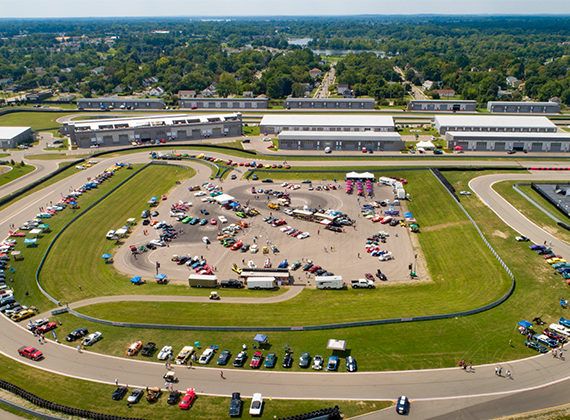Enhancing Public Spaces through Community Engagement
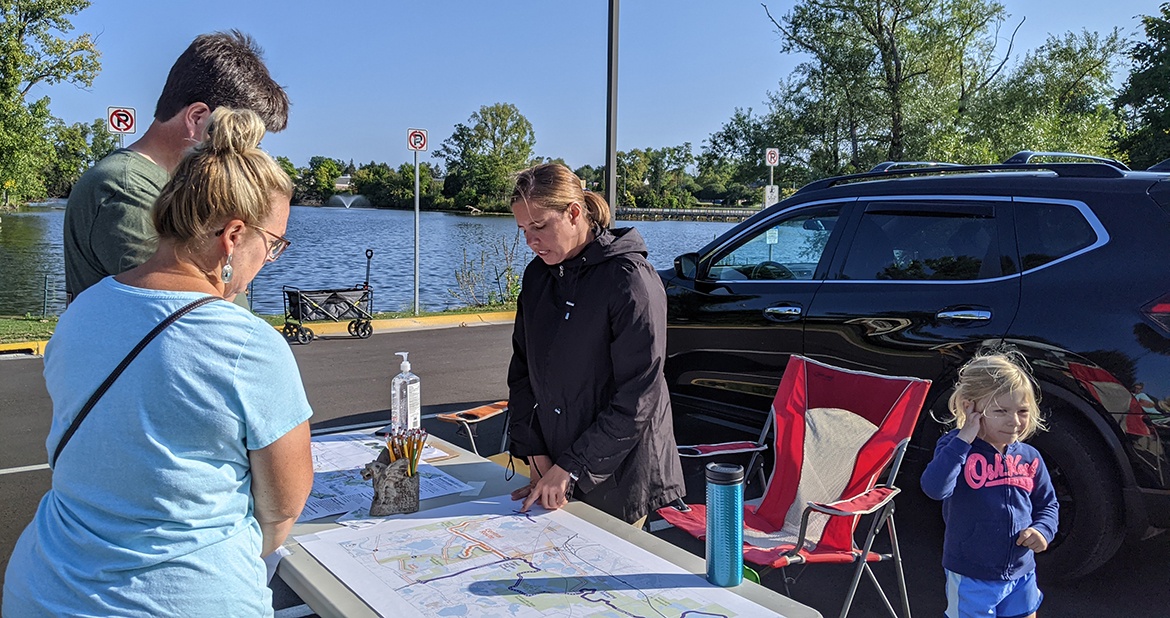
As landscape architects, we are given the gift of creating a vision of what a public space can become. We imagine how people will use it, how it will look, and the positive impact it will have on the surrounding community. One of the most important parts of that process is engaging the surrounding public, and actively listening to their thoughts, needs, and concerns. Through the process of community engagement, we bring together groups of people; stakeholders, interested groups, and citizens; to work collaboratively to address a common goal.
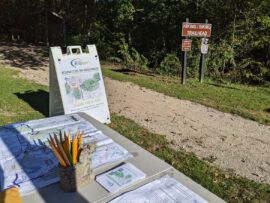
Request for public input at trailheads provides opportunities for users to provide direct feedback.
Engaging the community prioritizes the needs of the people impacted by the project. Conversations can lead to new ideas, further strengthening the final design. Galloway Lake Park is a large green space in Pontiac, Michigan that used to be a hub of activity through its fishing pier, basketball and tennis courts, and the now-defunct Ewalt Community Center. When starting the design process, PEA Group used a combination of online and in-person input. An online survey revealed many reasons why the residents of Pontiac do not use the park, as well as what amenities could be added to make it more desirable. We took the survey data, previous knowledge, and our design thoughts to a series of stakeholder and public meetings, where we collected information that changed the entire project. It was shocking the number of people who worked and lived nearby didn’t even know the park existed. We learned that grandparents want a safe, local place to take kids to play. That families need a place to hold picnics and parties. That the neighborhoods abutting the park don’t want any pathway connections because of how unsafe it has become. We can now take that knowledge and transform this space into a welcoming, active park that can meet the needs of the people.
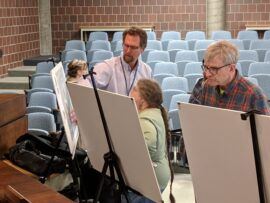
Town hall meetings allow the wider community to express their opinions on the project.
Additionally, this process allows us as designers, alongside community leaders, to enlist the people that will be impacted by the project, and help them feel more connected to the process. Often, designers receive pushback when they present their ideas. Meeting with the community creates a two-way conversation where both designers and citizens can have a productive discussion about their ideas. For example, as trail planners, when researching route options, some of the things we investigate are land ownership, safety, access to diverse populations, maintenance viability, and adjacent amenities. There may be a route option that looks best on paper due to its scenic views, but if there are large areas of property acquisition, or it would bypass large population areas, another option may be better. Addressing these issues in a public setting can help people gain a better understanding of why the design works.
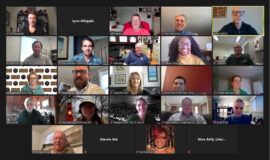
Leveraging a variety of platforms, including virtual stakeholder meetings, affords invaluable and easily accessible collaboration.
Alternatively, meetings can lead to fine tuning the results. In 2022, PEA Group worked with the Huron Clinton Metroparks on a trail study to connect two State Parks and two Metroparks in Livingston and Oakland Counties. The planning process involved meeting with stakeholders, site visits to score routes and determine the best option, and an in-depth community engagement process that included an online survey and attending public events such as farmers markets and track meets, to gain feedback. We learned that 97% of the 1,000 people surveyed supported the preferred route. However, while most people supported the route that rose to the top, it did not address the concerns of the entire community, who wanted a route to another popular regional trail system. While that route was not the most efficient for our project goals, through additional meetings, we were able to explain the reasoning behind the final route, as well as evaluate their concerns and discuss ways we could work together to achieve everyone’s goals. In the end, PEA Group updated the final maps to include another route connection and discussed ways that grant funding could be pooled together to create a stronger route with even stronger community support.
Public engagement is a valuable tool that brings together diverse groups of people to work toward a shared vision. Using a range of tools and techniques, it provides designers and community leaders with an effective strategy for design that will be welcomed and utilized by the community. Public spaces provide areas for all people, regardless of their background to gather, play, and learn. By remaining flexible and actively listening to a diverse cross section of the community, we can continue to create spaces that enhance and bring together local communities.
For More Information

